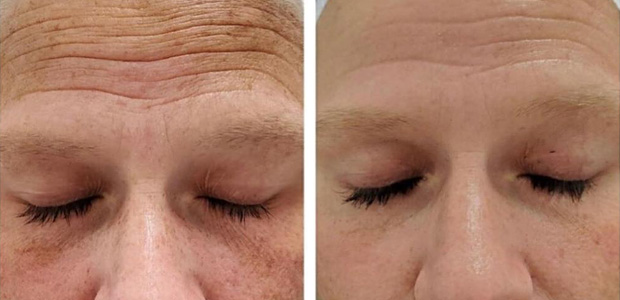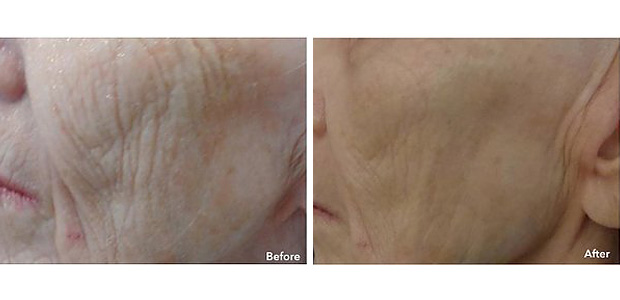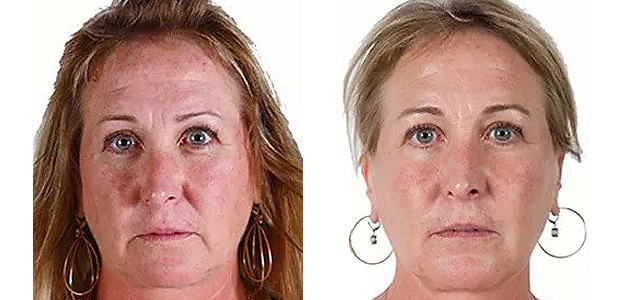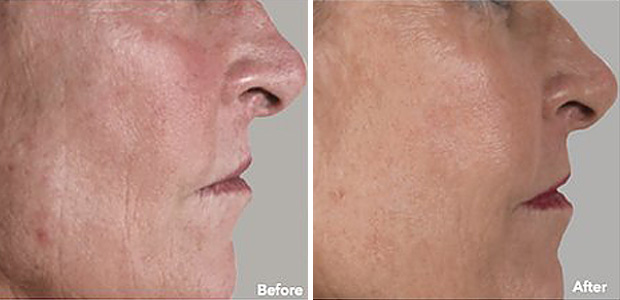Everyone is different. Our customizable treatments range from mild to aggressive, based on skin concerns and downtime availability. The degree of redness, or “erythema”, that the skin demonstrates depends on the individual and skin tone. In most cases, erythema will subside in a day or two. Some people experience light flaking for a couple days post session, especially if extra time was spent microneedling the area.
We administer a topical lidocaine by Zensa prior to treatment that takes the edge off of the pain. The feeling is an intense vibration with some instances of sharp pinching. Some areas of the body are more sensitive like the forehead or nose. We may adjust the depth of our microneedle pen for a more comfortable treatment. We also make adjustments based on your skins thickness in each charted treatment area.
Most people experience moderate pinpoint bleeding, which clots almost immediately and is wiped away before the treatment is concluded. Certain areas that have been more aggressively treated will bleed more than others. You will not be actively bleeding by the time the treatment is over and your total blood loss will not be significant.
The beauty of microneedling is that you don’t have to continue with treatment in order to maintain your results-your results are yours to keep! We recommend a series of 3-4 treatments to deliver visible improvements. Incorporating microneedling sessions into your preexisting skincare routine is a great way to create and preserve beautiful skin and we suggest maintenance sessions annually to for part of an anti-aging routine.
Wash the face gently a few hours after treatment. The microchannels we have created during your treatment are closed up by now. Gently message the face with tepid water (a shower can provide an easier ability to massage and wash the face), and remove all serum and other debris such as dried blood. This will improve the appearance of the skin and allow for better subsequent absorption of post-treatment skin care. Mineral makeup may be applied the following day.
For the first 1-3 days the skin will be very dry and feel tight. Frequent use of a recommended skin care will help alleviate this.
After 2-3 days, or as soon as it is comfortable to do so, you can return to regular skin care products. Vitamin A products are optimal and suggested.
Avoid alcohol based toners for 10-14 days.
Avoid direct sun exposure for at least 10 days if possible.
Do not apply chemical sunscreen the same day as treatment. Undesirable chemicals can penetrate if used in large amounts.
CLEAN: Use a soothing cleanser or face wash with tepid water to cleanse the face for the following 48 hours and dry gently. Always make sure your hands are clean when touching the treated area.
HEAL: Professional skincare is recommended post treatment as the properties are perfect to help heal the skin, and it will also help create healthy skin
HYDRATE: Following your Microneedling treatment, the skin may feel drier than normal. Hyaluronic Acid is an ideal ingredient to hydrate and restore the skin back to perfect balance.
STIMULATE: In the days following your Microneedling treatment, as the skin starts to regenerate, collagen stimulating peptides are ideal to keep the simulation going.
MAKEUP: It is recommended that makeup is not applied for 12 hours after the procedure. Do not apply any makeup with a makeup brush if it is not cleaned.
PROTECT: 4 hours after the procedure, apply a broad spectrum UVA/UVB physical sunscreen with an SPF 30. Recommended active ingredients: titanium dioxide or zinc oxide.
We only recommending using a microneedling pen with a licensed professional. A dermaroller uses small sharp points aligned on a rolling barrel to create tiny gashes in the skin that are irregular, unsafe and have a higher risk of infection, similar to the mechanics of a Roto-tiller. Our digital microneedling derma pen is precise, sanitary, safe and more effective. We love a good DIY, but please visit a professional for this procedure!
Contraindications and precautions to needling include any person with the following history: Keloid or severely raised scars; Eczema, Psoriasis, active Acne, Rosacea, or other chronic skin conditions; Actinic (Solar) Keratosis; Diabetes (delayed wound healing); presence of raised moles, warts, or lesions within treatment area; and Herpes Simplex or Zoster infections (treatment can trigger breakouts).
Absolute contraindications include: Scleroderma; blood clotting problems; collagen vascular diseases; cardiac abnormalities; Immunosuppression; active bacterial or fungal infections; scars less than 3-6 months old. Please consult a physician about when it’s safe to start microneedling a scar.




